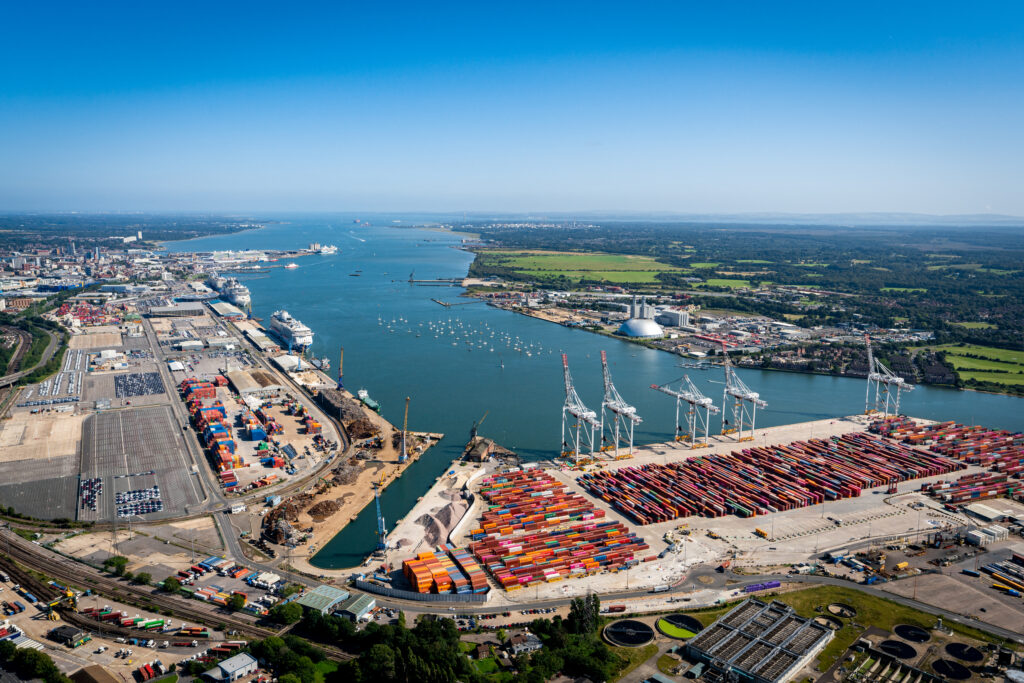Port Hinterland Warehouse Potential
5th September 2024

Suitable warehouse locations are in short supply but there are brownfield sites with available development land, as David Priestman reports.
Ian Henderson is Group Head of Property for Associated British Ports (ABP). ABP owns and operates 21 ports and hubs dotted around the UK, plus the Hams Hall rail freight terminal, east of Birmingham, which is leased to Maritime Transport.
Henderson’s role at ABP is to manage and optimise the strategic direction of property including building surveying, estate, asset management initiatives and master-planning. “I’m here to market the group’s property and land portfolio,” he tells me. “One of the problems third party logistics companies face is that warehouse leases don’t always match the length of the contract they have with the customer. The property sector is market-driven, so it’s important to take the right decisions on location, lease lengths, power, alternative energy and staffing. Things like having enough container storage space can give you true resilience in your supply chain.”
Diverse Portfolio
ABP have launched a property strategy, incorporating what is on offer, the space for warehousing, yards and containers. In his previous role at Wincanton Henderson hired property, now he is selling or leasing it. “I know the value of having land that will handle a reach stacker, for example,” he says. “The market is tougher, with grey space, so decisions are more nuanced now, for future-proofing. We’re a responsive landlord and (obviously) we’re not going anywhere,” as ABP are major players in UK logistics and shipping themselves and an UK Warehousing Association (UKWA) partner. Henderson is a Board Member of UKWA, which has around 1000 members of all sizes. “For ABP, as one of the leading commercial landowners in the UK, it is essential that we listen to the demands and challenges of these businesses so that we can better understand and fulfil their property requirements.”

Ian Henderson
ABP’s portfolio is divided into 3 regions: Southampton, Humber (Hull, Grimsby, Goole & Immingham) and Wales & Short Sea (Ayr, Barrow, Barry, Cardiff, Fleetwood, Garston, Ipswich, King’s Lynn, Lowestoft, Newport, Plymouth, Port Talbot, Silloth, Swansea, Teignmouth and Troon). It spans the length of Britain’s coastline.
The Port of Southampton (pictured) is Britain’s second largest port with 1.5 million TEU traffic per annum and is the largest in the automotive sector, handling 900,000 vehicles a year. It is the UK’s top export port, handling £40 billion of UK exports, as well as being Europe’s leading cruise turn-around port. Rail links are one thing that ABP are in favour of, but the UK still lags behind Europe in this regard.
Logistic Symbiosis
“We have diversity,” Henderson emphasises. “Every piece of land is an opportunity. We want to use it the way a property company would. Our tenants sit alongside like-minded businesses,” which is not always the case in industrial developments and means in one location there can be a port operator, contract logistics firm, freight forwarder and express courier, for example. That brings synergies in terms of services offered, goods handled and logistical expertise. “It’s ideal if a tenant has port-related business, but not essential,” adds Henderson.
“We have a process to determine the optimal use of our land, it’s collaborative, “Henderson explains. “Traditional locations have a place (for warehousing), but more sites are needed. Greenfield sites look shiny but come with high rent and often zero unemployment rates nearby. So being closer to conurbations and ports works better.”
similar news

